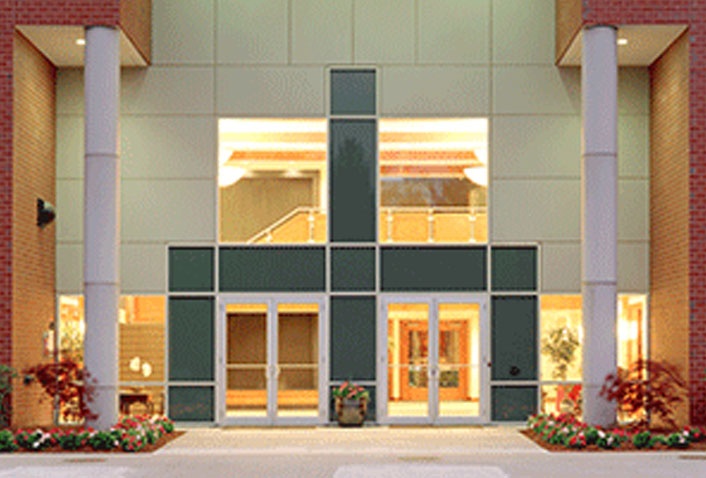Today, we are seeing many churches creating their worship facilities within commercial buildings. Large commercial structures have ample square footage and open space that can easily be reconfigured. Commercial properties also tend to have sufficient parking and landscape, as well as an at-grade pathway to a gracious entrance. With an abundance of vacant office buildings across the country and a growing need for cost-effective solutions for houses of worship, repurposing office space for churches makes a great deal of sense. And with a creative selection of materials and design features, we believe there is great potential in helping religious organizations to achieve their desired image and character in any setting.
Renovations of a commercial property may also be phased, allowing the church to become established in its new location. This allows the organization to defer the build-out of expansion space or the completion of planned finishing touches. Unused building areas may also offer potential for short-term leases that can help offset renovation and moving expenses, although tax implications require consideration and planning.
Imagine a former, highly visible banquet facility, being transformed into a satellite church campus. Grace Chapel had that vision. With their main church situated in Lexington, Mass., they had identified the need to serve a growing church population travelling to Lexington from northern towns. After less than a year and a half, Grace’s satellite site in Wilmington is now ready to expand its 320-seat sanctuary and add more space for fellowship.
International Family Church originally shared space with another church and then moved into a commercial property which they occupied for about ten years. The property was then sold back to a commercial institution for a profit. Today, they own another attractive, large former office building. Their new facility is situated on enough property to support their immediate and projected parking needs, as well as their campus master plan vision to construct a gymnasium and new, inspirational sanctuary.
And while we see this trend continuing, we wonder if there is a greater opportunity to design even more sustainable, useful structures. Why not consider buildings that serve both uses, especially with symbiotic users? In some instances, combined office and religious spaces could make perfect sense given the following statistics:
- Office buildings are used an average of 55 hours per week, primarily during the day, Monday through Friday
- Churches and synagogues are used mostly in the evenings and during weekends
- The parking demands for business uses and churches are not concurrent
- Overall building usage could increase by nearly 40% or rental costs decrease by 30%
- Buildings used 7 days a week are more sustainable and efficient than those used for 5 days a week
We are excited about the opportunities that churches have to create unique and appropriate environments for worship and related activities. It's enlightening to also see religious organizations adapt to new settings, find ways to engage new technologies, and employ creativity in defining sacred spaces.

